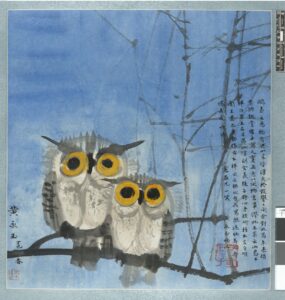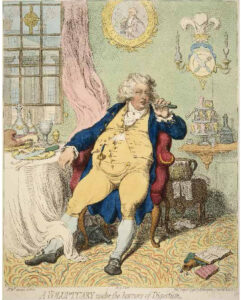When you are climbing the snail stair of the Reading Room in British Museum you know something different is about to happen. There is nothing more thrilling than discovering ‘the freedom of speech and expression’ alive and well; there is nothing more exciting than the breaking of rules and conventionalism of societies and the smart slight of mind that circumvents unfair laws and mores with intelligence, sense, humour and Art. I Object delivers this frisson.

The moment you step in, you encounter an amazing unexpected social advance. There, in the first row, very visible for the eye, is a special catalogue for blind people in which the main artworks exhibited
are reproduced in braille, which is both futuristic and humanistic. It is great to pass your fingers over the raised dots and feel art through another sense. I challenge all visitors to experience this. A complete success of the co-curators Ian Hislop and Tom Hockenhull from the museum. Thank you on behalf of the blind who are most times forgotten in exhibitions. On the w
alls and in showcases of the main gallery are a variety of amazing artistic and daily objects from all times, from all places, used as weapons of peace to dissent from the more oppressive instincts of the establishment and express and spread an alternative opinion while trying to avoid deadly repercussions; stoning, burning at the stake, the guillotine, hanging, shooting or polonium poisoning at the worst; torture, jail, social rejection or censure at the best. More than artworks, they could be considered lifesavers and their makers, not only artists but heroes, in times of ignorance, intransigence and savagery, so dangerously near in their own times, not yet eradicated in ours. Prints, drawings, books, sculptures, crafts, artifacts, posters, defaced coins and bank notes … among other delicacies, all concealing secret messages, some serious, others jokey but all short and sharp, as required for the situation. From the banks of the river Nile in the kingdom of Cleopatra´s pornography to the Church´s edited and author´s unamended seedy Boccaccio´s Decameron, or a Bible which encourages sex sins, to the satirical Mexican cult of death, all teaming up with hidden political claims like the the suffragettes´ desperate cry, forever cast on coins, social denouncements or religious heresies written, carved or printed on all kinds of items. The exhibition is a box of surprises you never know what is going to be next and the task of deciphering the messages makes the experience unpredictable, almost mysterious like in a game. At the exit you can write your own dissident´s statement on a wall. A suggestion for the curators: If you ever bring it to Spain, consider including the figures of “Fallas” from Valencia, the lyrics of “Chirigotas” from Cádiz and the iconic cocktail “Cuba-libre” (rum with coke), some other of our Latin ways of dissent. I am not going to give you more clues. Just say that like in a merry- go-round, when you finish, you want another ride. Hurry up it is opened until the 20th January.

From the British Museums briefing notes:
Uncovering a treasure trove of dissenting objects can be tricky. Private Eye Editor Ian Hislop hand-picked a range of 100 intriguing objects that explore the idea of dissent, subversion and satire. A wide variety of objects are on display in the exhibition – from graffiti on a Babylonian brick to a banknote with hidden rude words, from satirical Turkish shadow puppets to a recently acquired ‘pussy’ hat worn on a women’s march. Unlock the messages and symbols these people used, and get closer to understanding them. This history shows that people have always challenged and undermined orthodox views in order to enable change. Ultimately, the exhibition will show that questioning authority, registering protest and generally objecting are an integral part of what makes us human.
Susana Gómez Laín Madrid Editor
Volume 33 no 3 January / February 2019 p9

Thank you; this is the most interesting review I have read in a long time; I really enjoyed it and look forward to delving into some of the aspects you covered. I had never thought of an art catalogue for the blind and hope it helps them to imagine what is in front of them. You also say something very important: “Ultimately, the exhibition will show that questioning authority, registering protest and generally objecting are an integral part of what makes us human.” People need to stand up today and protest the status quo; we must stop being so apathetic to what’s going on around us, I won’t list the many issues here that need challenging, as the Art Lantern is an art magazine and not the place for issues on the environment, government policies and wars.
I loved the “Votes for Women” coin from the suffragettes.
I think art should and could surface all issues. All issues can and do surface inside the art process. Art cannot stand alone.
Dear Derek,
I completely agree with you. Art is a language and stands for communication and dialogue.
Many thanks Dorothy. I am very happy this review moved new aspects of your sensibility to social and humanistic problems. There have always been rebels and there will always be, and many ways of manifesting your dissent on what is going on in the world, and Art is an important and pacific channel to do it.
I also found very suitable that the editor chose that coin to illustrate the article, among many other treasures that the exhibition offered, being the feminist movement such a live subject. A perfect use for money.
I agree, this is a fun review, well-written and stimulating, not an erudite commentary that starts somewhere up in the clouds and then after many words, ends up without really saying anything. The author made me feel like I had missed something very special and unique.
Thank you very much Mr. Chang. It was my aim to make the reader feel like that. When I write I try to imagine a blind friend beside me and try to make him/her feel the same I am feeling, entertain, build memories and make the most out of Art. I don’t write for experts but for ordinary people most of the time, nor do I want to impose my opinions, just to offer my impressions.
I am sorry to tell you that you missed something very special. Be careful next time.